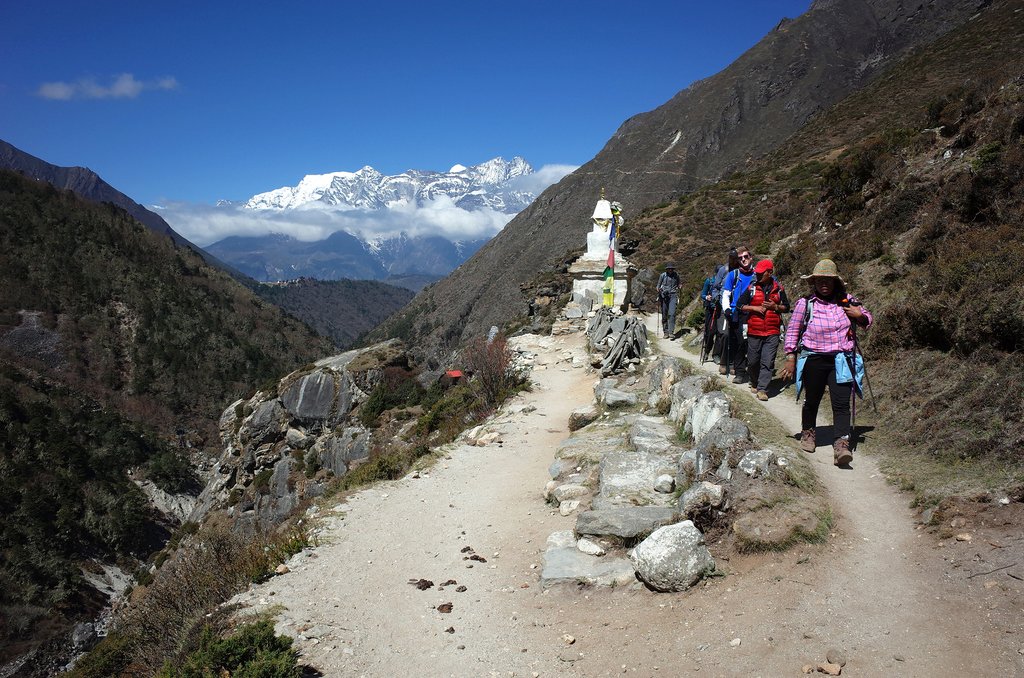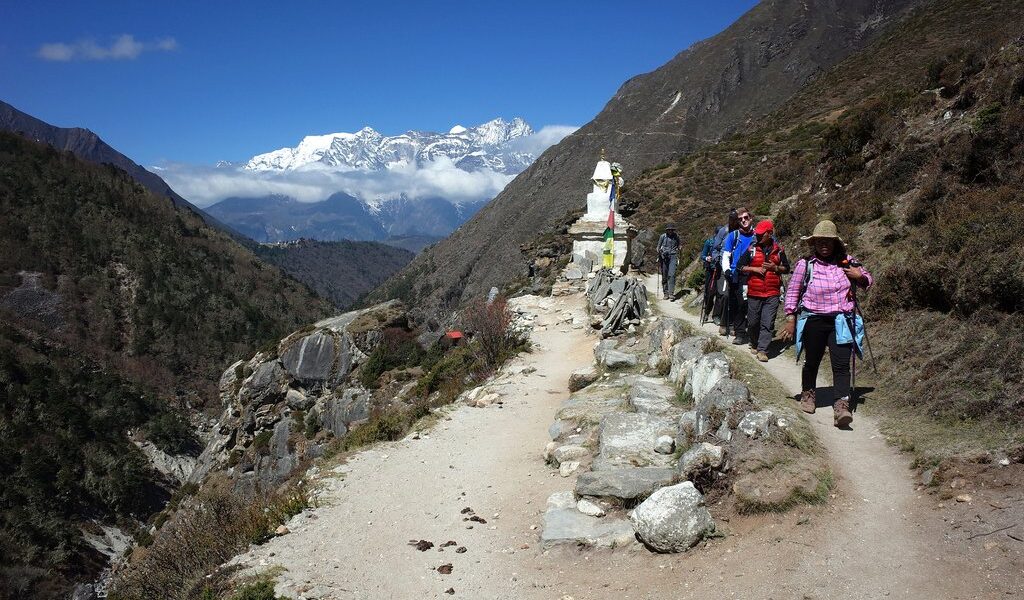
As the monsoon rains die down by mid-to-late September, the conditions are right for trekking in Nepal again. Although lingering humidity may obscure some mountain vistas, there’s still a chance to catch impressive views early in the morning. Plus, the popular Everest Base Camp trail is less busy in September than later in the autumn season.
## Weather in the Everest Region during September
Nepal experiences its monsoon season, a period of significant rainfall, which generally spans from June to the beginning of September. As September arrives, the intensity of the monsoon begins to gradually subside. While it’s true that September sees less rainfall than the peak monsoon months of July and August, it is still wise to anticipate some rain during your visit. Typically, as the month progresses towards its midpoint, the frequency of rainfall decreases, shifting from daily occurrences to intermittent showers every few days. By the end of September, the rains are largely expected to cease altogether, paving the way for clearer skies.
When considering temperatures in the **Everest Region**, it’s important to note that the climate remains relatively cool throughout the year. September presents a more comfortable experience compared to other months. Temperatures rarely reach what could be considered “hot,” making it an agreeable time to explore the region. As you ascend to higher altitudes, particularly closer to Everest itself, temperatures will decrease, especially during the night. At **Namche Bazaar**, situated at an elevation of 11,290 feet (3440 meters), the average low temperature in September is around 42°F (6°C), while the average high temperature reaches approximately 59°F (15°C). This makes for pleasant trekking conditions during the day, while still requiring appropriate layering for the cooler evenings.
## Crowd Levels and Travel Costs in September
September marks the transition into the autumn trekking season in Nepal, a period that attracts a growing number of visitors. However, it’s worth noting that the trails are typically less crowded in September compared to the peak months of October and November. This means you’ll have a slightly more tranquil experience on the trails, avoiding the heavier foot traffic associated with the later autumn months.
Many of the accommodations along the popular trekking routes, including teahouses and lodges, traditionally reopen their doors in September after taking a break during the monsoon season. This provides trekkers with a greater range of lodging options. Because the peak season crowds haven’t yet fully arrived, it is often easier to secure a bed in some of the more sought-after locations, offering a more relaxed approach to planning your overnight stays.
## Recommended Trekking Routes for September
One of the challenges associated with traveling in Nepal, particularly during and immediately after the monsoon season, is the increased risk of landslides. The heavy rainfall can destabilize slopes, potentially blocking access to certain remote areas and trekking routes. However, the trekking trails within the **Everest Region** are generally well-maintained and developed compared to those in other parts of Nepal.
Therefore, sticking to the more popular and well-established routes in September minimizes the risk of encountering trail obstructions due to landslides. In the event that slips do occur on these popular routes, they are typically cleared relatively quickly, minimizing delays to your trekking itinerary.
While the allure of venturing off the beaten path is strong, especially for those seeking unique experiences in the Everest region and elsewhere in Nepal, it’s prudent to exercise caution in September. Lingering rains can sometimes disrupt flight schedules between **Kathmandu** and **Lukla**. Opting for a flight to **Lukla** remains a more dependable choice than relying on overland trails like the **Pioneers’ Route from Jiri**, which heavily depend on reliable road access to the trailheads.
Given these considerations, it’s generally advisable to prioritize the well-trodden paths during September. Classic treks such as the renowned Everest Base Camp trek (EBC), shorter excursions to **Namche Bazaar** and its surrounding areas, or the scenic Gokyo Lakes trek offer excellent options for exploration during this time of year.
## Essential Items to Pack for a September Trek
In September, the weather can be somewhat unpredictable, so packing appropriately is key. Many travelers find that umbrellas are a more practical choice than heavy rain gear, particularly at lower altitudes where temperatures tend to be warm and humid. However, it’s still advisable to include a lightweight raincoat in your trekking gear, just in case.
Keeping your feet dry is crucial for comfort and preventing blisters. Be sure to pack an ample supply of spare socks, allowing you to change into dry ones whenever necessary. Furthermore, designate at least one set of clothing specifically for evening wear, ensuring that you avoid lounging in damp clothes after a day on the trail. Light wool materials, such as merino wool, are excellent choices because they retain warmth even when wet, providing additional comfort in cooler conditions.
As with trekking during any season, bringing your own sleeping bag is highly recommended for the EBC trek. While teahouses typically provide blankets, their cleanliness can sometimes be questionable. Having your own sleeping bag guarantees a clean and cozy sleeping environment, and it will be particularly appreciated for the extra warmth at higher altitudes. A two- or three-season sleeping bag should be sufficient for treks undertaken in September.
## Transportation Considerations: Getting To and From the Everest Region
The fastest and most convenient method of reaching the **Everest Region** from **Kathmandu** is by taking a flight to **Lukla**. However, it’s essential to factor in buffer days within your itinerary to account for potential flight delays, especially in September. The lingering monsoon rains can sometimes cause disruptions to flights to and from **Lukla**, so having some flexibility in your schedule will minimize the risk of missing any important international connections.
## September Events and Festivals
**Dashain**, Nepal’s largest and most significant annual festival, may occasionally fall in late September. Although **Dashain** is primarily a Hindu festival, the **Everest Region** is predominantly inhabited by Tibetan Buddhists, and as such, the festival is not celebrated with the same level of enthusiasm among the Sherpa population compared to other ethnic groups in Nepal.
If your travels take you through **Kathmandu** during the **Dashain** festival, it is essential to plan accordingly. On the most important days of the festival, much of the city effectively shuts down, with limited restaurants and shops open for business. Finding transportation, such as taxis, may also prove more challenging. To put it in perspective, consider **Dashain** as similar to Christmas Day in many Western countries. Essential services continue to operate, but accessing non-essential services may require some extra effort and planning.
**(Original word count: 745. New word count: 994)**
B-1715

